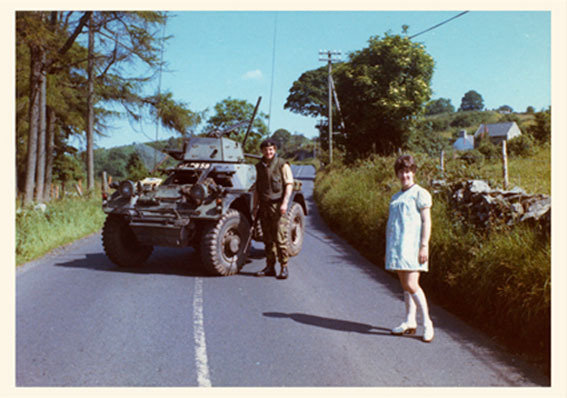Declan Clarke
dal 11/11/2014 al 19/12/2014
Segnalato da
11/11/2014
Declan Clarke
Mother's Tankstation, Dublin
Group Portrait With Explosives. On show a new film, a making and viewing experience that exists because it has to. There is the making of a successful artisitic expression of something 'real', from which the must see art work results.

“It amounts almost to a manifesto: looking at something real and finding a way of expressing it”. 1
In a recent interview the filmmaker Mike Leigh 2, compared his experiences of studying drama at RADA and attending ‘life’ classes at Camberwell School of Art during the 1960s. One, he suggests, was predicated on the systematic, isolated learning and the staged, public performance of extant material, while, and in vivid contrast, the latter pitted twenty or so people working together in a room, one being a naked model, another a teacher, but both in different ways compelling a mixed group of ordinary people to explore inner resources and find personal methods of expressing an ineluctably evident, visceral reality.
Declan Clarke’s new work, Group Portrait with Explosives, does exactly this; it confronts and exposes the learning of life lessons; looking directly into (the lens of) real issues, to which it proposes original, personal and ingenius solutions. As the title, Group Portrait... might suggest, Clarke was orginally trained as a painter, firstly at the National College of Art and Design, Dublin, and then at Chelsea – alongside oft-times collaborator Paul McDevitt – but has subsequently been considered mainly as a cultural gatherer of research-based projects and only latterly, properly, as a quietly respected expert - an ‘artist’s artist’ - of alternative fim making. In Group Portrait with Explosives, Clarke clusters all his learning and experience, combining research techniques, sophisticated narrative and filmic skills accrued over a decade of practice – often delving into complex and culturally abstruse material – and invisibly welds it to real histories, with universal relevance but inniated from the core of his personal life and family narratives.
The result is a superbly crafted and compelling forty-two minute film, a making and viewing experience that exists because it has to. There is, of course, no formula for this, the making of a successful artisitic expression of something ‘real’, from which the must see art work results. Rather, these rare and precious things seem to have made themselves, or to have been beamed, complete, into place with little evidence of struggle or effort. Don’t be fooled. If there were any sort of hypothetical recipe, it might include the capacity to surprise, to entertain and engage, while handling complex socio-politic narratives, inextricable connected to the earthed humanity from which they inevitably arise, all tied up with the strings of objective grace, humour and a lightness of touch that can only be generated from self-(effacing) knowledge. The almost absurdist conflation of Declan Clarke’s understated work forms concentric links, connecting the former country of Czechoslovakia with the rural South Armagh, it’s notorious IRA Brigade, the early history of Czechoslovakian tractor production with structuralist and brutalist architecture, to the invention of Semtex, it’s manufacture and related smuggling, IRA bomb production, ‘peacekeeping’ and Clarke’s early fascination with militaria and his personal cache of wooden weaponary, and so back to tractors...
Press Contact:
Finola Jones or Maeve O’Flaherty, gallery@motherstankstation.com
Opening: 12 november 2014, 6-8pm.
Mother's Tankstation
41-43 Watling Street - Ushers Island - Dublin 8
thursdays to saturdays 12.00 noon to 6.00pm
other times by appointment



